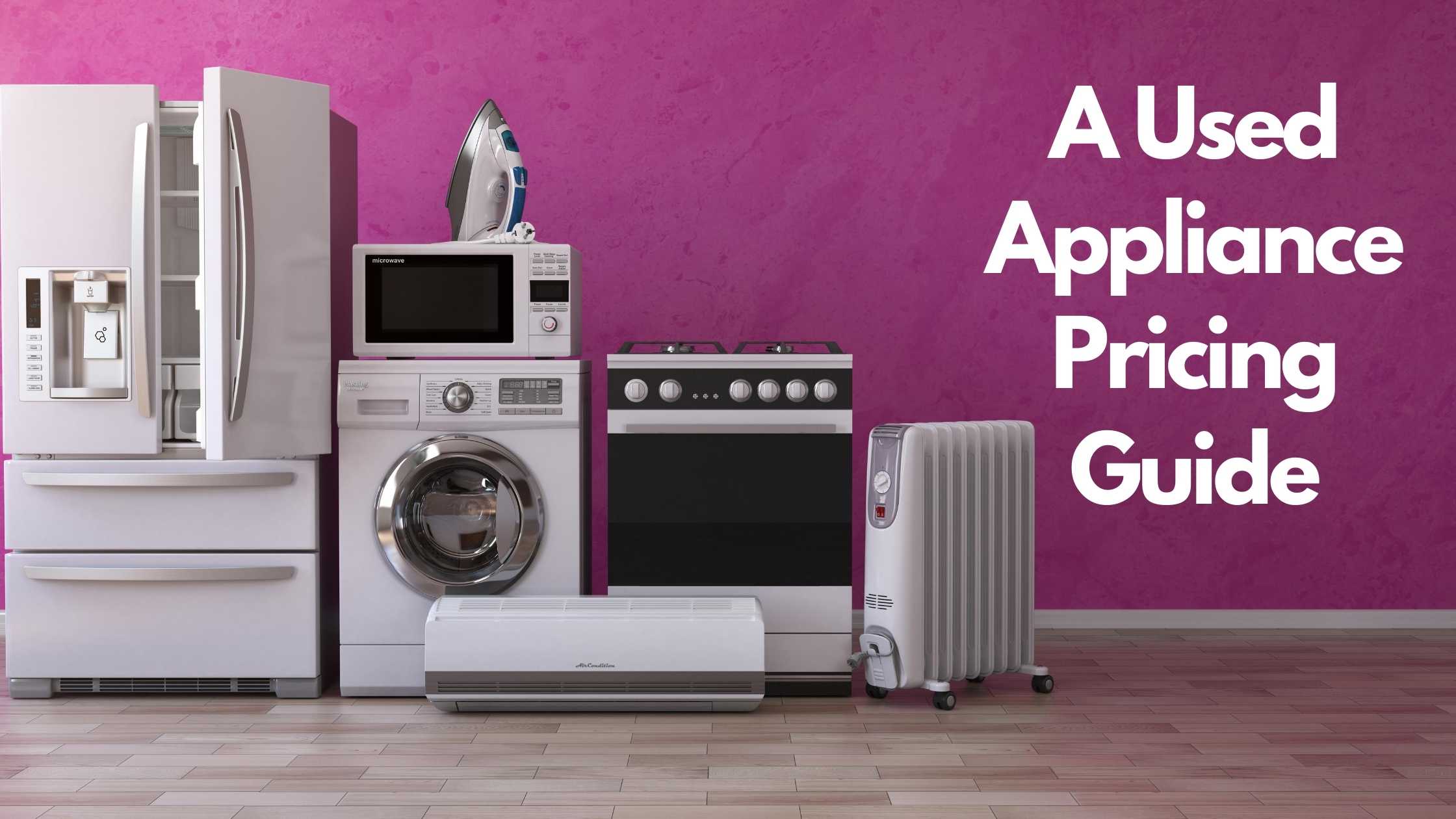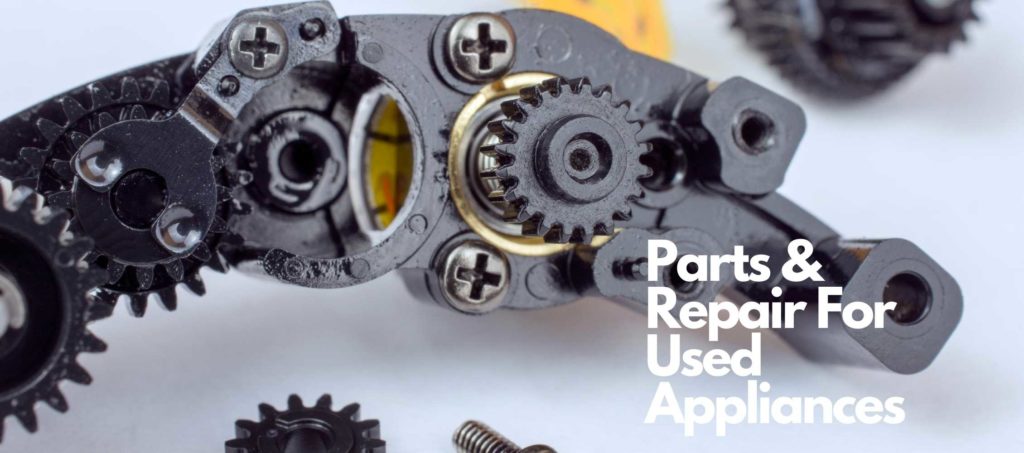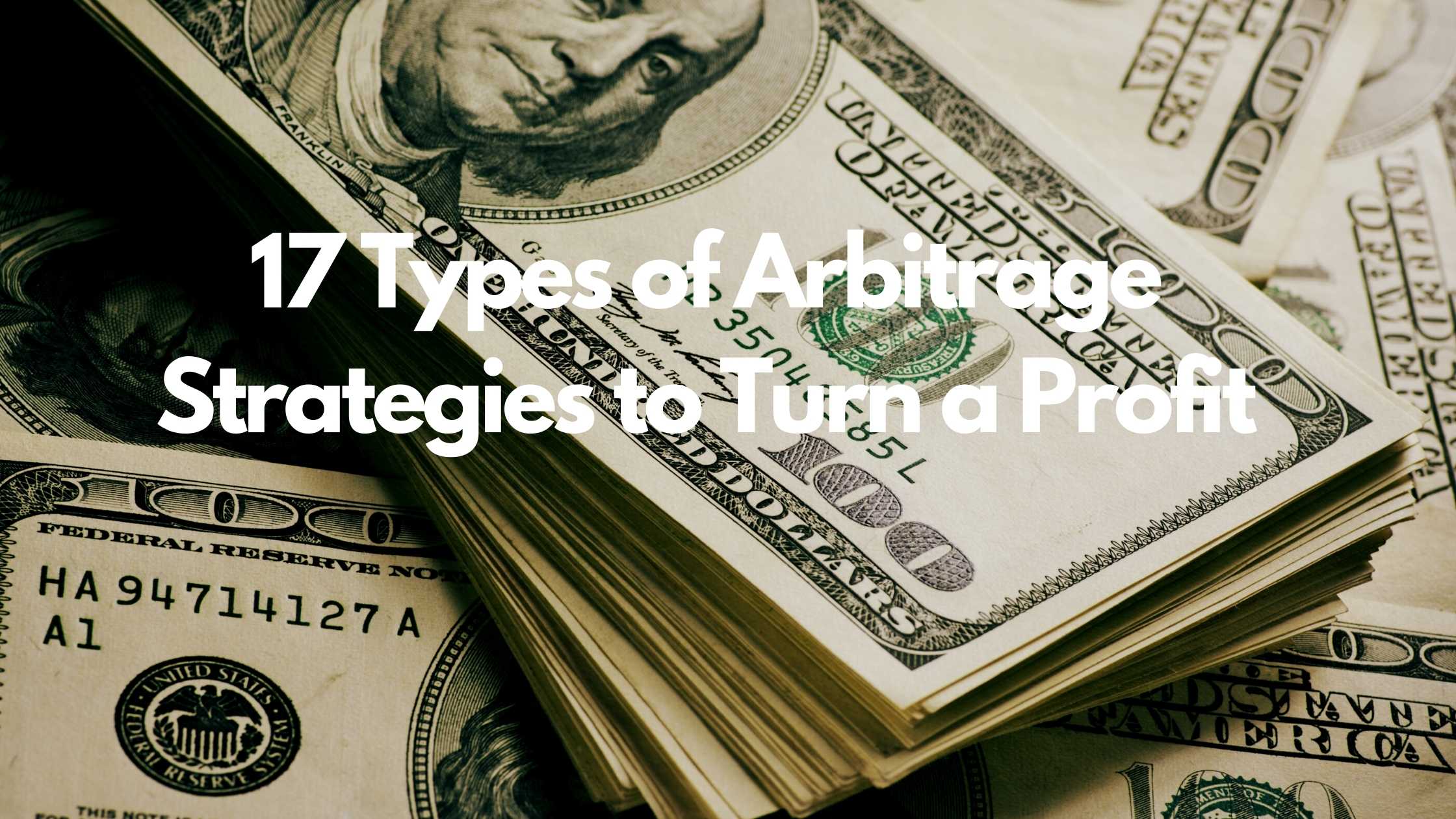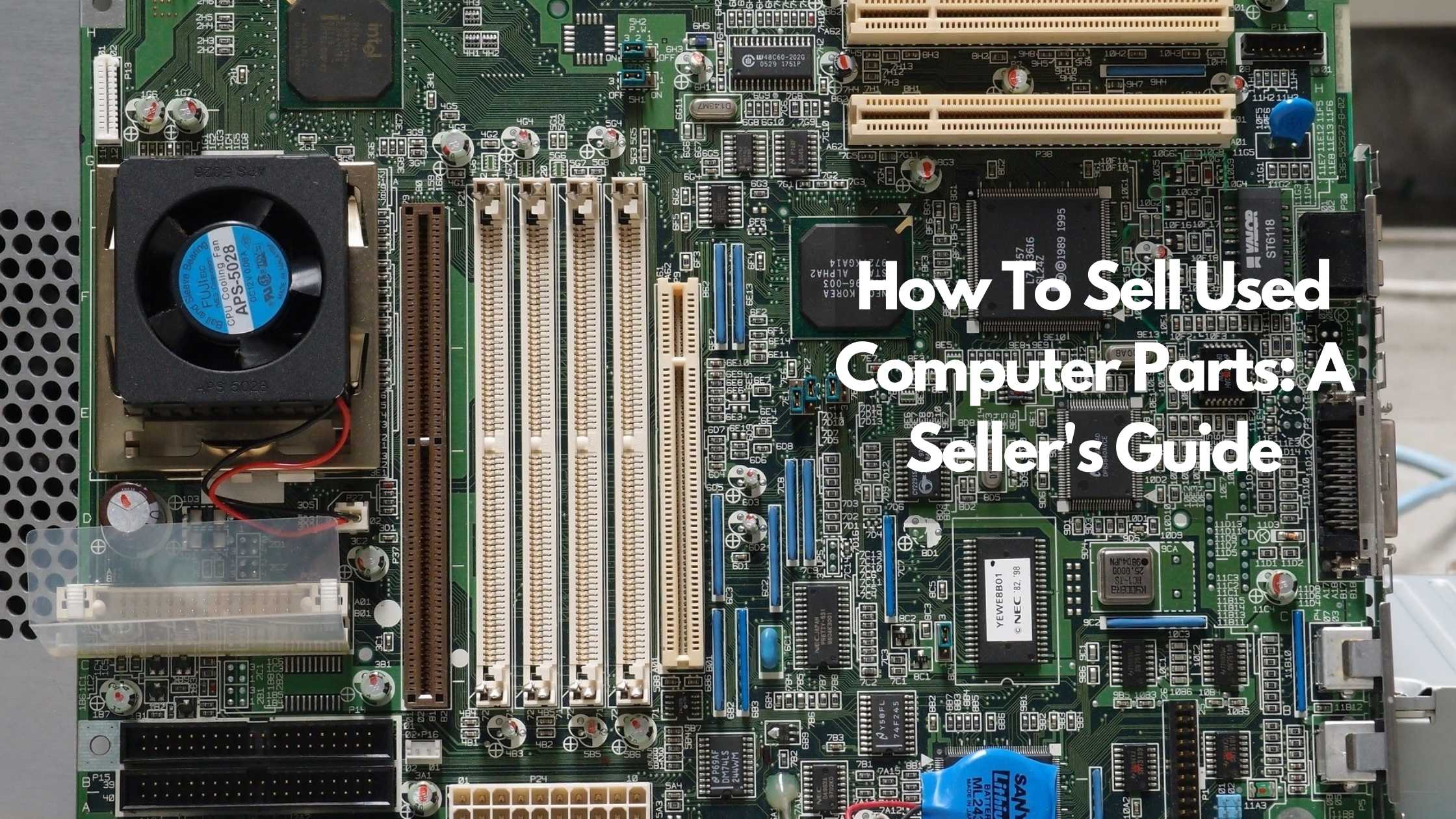
A Used Appliance Pricing Guide

When looking for a used appliance, you must consider various factors in terms of price. A depreciation formula can assist in figuring out how many years left an appliance has which, helps narrow down pricing. Other factors to consider are brand, condition, and appliance features.
You can determine a fair price for a used appliance by following a three-step formula:
- Initial purchase price / estimated life cycle of the appliance = Depreciation per year.
- Life cycle of appliance – Age of appliance = Life left in life cycle
- Life left in life cycle X Depreciation per year = Fair price
Though this formula is a good starting point for determining a fair price for a used appliance, it shouldn’t be considered a hard and fast rule. There are many other factors that you should be considering. Continue reading for an in-depth look at what factors influence appliance pricing..

A Used Appliance Pricing Guide
The depreciation formula above is useful for pricing used appliances and anything that a person can buy on the secondary market. Looking at the useful lifecycle of merchandise helps buyers see what a fair current day price is for the product of interest.
Let’s look at an example:
Say, a 5-year-old GE oven has an original purchase price of $750.00, and a useful life cycle of 15 years.
Initial purchase price: $750.00/ Estimated Life Cycle: 15 Years = $50.00 Depreciation Per Year
Life Cycle of appliance: 15 years – Age of Appliance: 5 Years = 10 Years Life Left in Life Cycle
Life Left in Life Cycle: 10 Years X Depreciation Per Year: $50.00 = $500 Fair Price
As stated earlier, this formula, as with any depreciation formula, has its caveats.
Sellers will need to have a realistic view of the products that they’re offering. Being accurate is sometimes tricky because people remember the substantial investment that they made when they initially bought their appliances.
Think of an appliance the way you consider a new car. The second you drive it off the lot, the price instantly drops. The first time you use your device, it’s retail price will take a considerable dip.
A more expensive appliance will likely hold its value better than one that was less expensive when originally purchased. The way you treat your devices also has a significant effect on the resale value. If you don’t abuse it, it will be in better shape once you decide to sell it.
Below, we’ll go into more detail about what factors influence the price of used appliances.
Brand
Brands can have a significant influence on the pricing guide for a used appliance. Some of the most popular appliance brands are attractive because of their reliability and general affordability.
Some of the most popular appliance brands on the market today include the following:
- Frigidaire
- GE
- KitchenAid
- LG
- Maytag
- Miele
- Samsung
- Whirlpool
Selecting a well-known brand of appliance can lead to either an increase or a decrease in price. The price variation depends on a few elements, including supply and demand.
Supply and Demand of a Brand
Because of the popularity of a brand of an appliance, customers may see an oversaturation in the resale market. An oversaturation means higher competition for sellers to set their appliance posts apart from similar listings. Flooding the market with a particular product or brand will inevitably drive prices down.
A fundamental principle of economics is supply and demand. When buyers have comparable options to choose from (an excess supply), they become more price adverse (demand drops). Sellers will have to drop their prices to compete in the market.
If sellers don’t drop their prices, they will likely be holding on to their products longer than they planned or risk not selling them entirely.
On the other hand, some buyers will be more willing to pay for brands that they know and trust. Popular appliance brands are prevalent for a reason. The prevalence of the brand usually occurs because they are known to be reliable.
Reliability of Brand
If we again use cars as an analogy, more reliable vehicles often have a higher resale value. Take a Subaru, for instance. Universally known for its reliability and a brand that Kelly Blue Book has listed with the highest resale value.
Subaru’s aren’t the most expensive car brand in the market, but they hold their value the best.
Most popular appliance brands also mirror this trend. Though they may not be the most expensive brand upon initial purchase, the most reliable brands will hold their value the best and resell for the highest amount.
Of some of the most popular appliance brands listed above, many of them fall into a surveyed list of the most reliable options on the market. Only Miele is considered a high-end appliance brand.
Another reason that the resale price of a well-known brand may be higher than its less popular counterpart is that when repairs are necessary, parts will be more readily available. Not only are the parts available, but if a technician needs to service your appliance, they will be more familiar.
This familiarity can lead to less time spent repairing, and less money leaving your pocket.
Click here to learn if you should purchase a used appliance/

Condition of the Appliance
Condition is one of the most significant determinants when it comes to pricing an appliance.
The great thing about secondary markets for selling all items, appliances included, is for the buyer to see the exact item they’re purchasing.
The formula provided above for finding a fair sale price for a used appliance may not be an accurate representation of a product if it shows excessive wear. The depreciation formula applies to machines that are in excellent to good condition.
Good condition means that for the age of the appliance, it has normal wear and tear. Pieces broken or missing would probably not fit into the good condition category.
Look at Comparables
For those appliances that don’t fit into the excellent to good condition categories, then the easiest way to price is based on comparable. Think of it as similar to real estate. A good way to figure out how much your house is worth is to compare homes with equal qualities.
Checking secondary markets should reveal a large assortment of appliances in various conditions, in which sellers can base their pricing. Buyers should also be reviewing these markets, to have a better idea about what is a fair price to pay.
Ask the Seller Questions
Buyers can also directly contact sellers to ask any questions potentially not found in the seller’s post or to ask for additional photos. There are some instances when a seller may not post the exact picture or angle that interests a buyer. These instances make open communication within a secondary market particularly essential.
After you have received adequate information, you should feel assured that you know what you’ll be receiving from the buyer.
Check Out Options for Protecting Your Purchase
As an additional peace of mind, some secondary markets allow the user to check out using PayPal. The ability to pay using PayPal is crucial because they protect your credit card information. So, you can shop without ever having to risk your credit card information.
Check for secondary markets that allow for returns, in the rare instances where a buyer isn’t completely satisfied with their purchase. Allowing returns is a massive advantage. Even with the most detailed pictures and information, a buyer may still be unsatisfied with the purchase.
Learn more on how to return an item you bought online.

Parts and Repair for Used Appliances
A factor that should be taken into consideration when determining what price is fair for a used appliance is whether parts for repair will be readily available when you need them. The availability of parts in your area harkens back to the topic of the appliance brand.
Whether we like it or not, appliances will likely have a failure of some kind in their lifetime and may require some repair. Often, these repairs are relatively minor, especially when compared to getting either a new appliance or another used unit.
Even though the repair may be minor and a relatively easy fix, the parts for the fix will need to be readily available in your area.
More common appliance brands will inevitably have parts that are easier to acquire. Customers will and should look to make sure parts are available for their specific appliances. If a device doesn’t have parts readily available, then the price won’t be as high for resale.
Customers are hesitant to pay for such a sizable expense like an appliance if they believe that it won’t be reliable or easily repaired.
Not only should the availability of parts be considered but also whether the cost for repair will be more expensive than the appliance is worth.
Ask for Maintenance Records
Buying a used appliance on a secondary market allows the seller to explain the current condition of the device. Sellers can also detail if any repairs have happened in the past. Past maintenance records will give the buyer a general idea if it needs repairs soon.
Buyers should also check for any known recalls or issues on the appliance they are looking to purchase. Any recalls on a machine will affect how much a buyer is willing to pay.
If sellers are posting items in “as is” condition, they will need to price them low enough that buyers will be willing to take on the cost of repairs.
Seller/Buyer Ratings
Secondary markets allow individuals to buy and sell goods directly. There are some pretty significant advantages from buying on these kinds of sites. One of them being transaction ratings that each buyer will emit after each transaction with a seller.
After each transaction, customers have the option to rate how satisfied they were with the purchase. Most sites have a star system, with five stars being the maximum rating you can receive.
When customers look at the seller ratings, two features affect how trustworthy a seller appears:
- Number of transactions
- Star ratings of their transactions
When a customer sees a seller with a large number of successful transactions, they will be more likely to make purchases from them. A seller with no transaction history may not be able to sell the same product as quickly or for as much money.
People are more likely to buy from someone with a higher rating and selling history.

Extras That Affect Price
There are additional features that will affect what customers can sell their appliances for and what buyers will have to pay.
Energy Efficiency
Customers will be more likely to pay a higher price if the used appliances have features that improve functionality or energy efficiency.
Customers are willing to pay more money if it means that they will save on utility bills in the future. Sellers should set prices accordingly, and buyers should adjust expectations accordingly.
Pro Tip: Look for the Energy Star Logo to find the most energy-efficient appliances.
Appliances can make claims that they are energy efficient, but Energy Star is the only official government testament to energy savings. Energy Star products are rated by the Environmental Protection Agency annually to prove their energy savings.
Functionality and Convenience
Functionality and convenience are assets that will increase the price of appliances on the secondary market. Devices, such as refrigerators that include features like ice or water dispensers, are more attractive than those without them. Accordingly, the price will increase.
Features in used appliances like self-cleaning, counter depth, or WIFI connectivity, will increase the cost. Any additional assets that assist the user in making their lives easier are all bargaining chips for the seller to increase their asking price.
Each buyer will have different features that are important to them.
Determine Your Needs and Budget
Research what is essential to you in an appliance. Search for the items that fit your specifications. Once you have an idea of what is necessary for your used appliance, you can begin to shape your budget. Your budget will reflect the base appliance price plus the additional features essential to fit your lifestyle.
For example, someone like a chef who does a lot of cooking may require a stovetop that features an induction cooktop to heat water more quickly.
A single person who doesn’t prepare as much food, but still requires a stovetop, likely will not care how fast water boils. They may prefer the feature, but it isn’t an integral part of their buying decision.
Typically, stoves that have induction heating stovetops are more expensive when compared to a traditional unit. Customers are paying for the base price of the oven plus the additional cost of the added feature.
Trusted Retailors
Finding a trusted retail partner when looking for used appliances can be a confusing and frustrating process. Luckily, some secondary markets make finding the right product a breeze.
Retail giant eBay is a well-known secondary market that you’ll be able to find a variety of products, including appliances. There are also local online marketplaces through Facebook as well as apps such as LetGo and OfferUp. In most of these situations, it is a one-on-one transaction – and often in cash.
Another excellent option for a secondary appliance market is a place called Sheepbuy.com. As with eBay, you can find any number of products from all of your typical retail categories. Sheepbuy has some benefits that go above and beyond other online marketplaces:
You can sell your used appliances on Sheepbuy in any form of condition.
The good thing about this website is that there is a free tier. You don’t pay any fee if your used appliances don’t sell.
The best part is when your items sell; there are never any selling or hidden fees.
All transactions are strictly between buyers and sellers.
All purchases are safe and secure via PayPal. For more information on buyer protection from paypal, click here.
Sheepbuy only caters to verified sellers as an added protection to buyers.
Thus sheepbuy sellers must have their PayPal account verified. This means their phone, email, and bank account must be verified to link their account onto Sheepbuy.
As in any other marketplace, make your items title, description, and pictures as best can be to attract more viewers and sell more.

Negotiating the Price of a Used Appliance
The price listed on the secondary market is the starting price point.
It will be up to the buyer and seller to negotiate a price that they are both willing to buy and sell the appliance for, respectively. When offering an amount to the seller, the buyer should suggest something within reason. Trying to “low ball” an offer will often create an unpleasant experience in the seller’s eyes.
As we’ve discussed throughout, several factors affect the used appliance price guide. Generally, you can estimate the depreciation of any product using a reasonably simple depreciation formula. However, using just this formula isn’t taking in all the factors that can influence pricing.
As a seller, you could potentially be costing yourself a potential profit if you aren’t considering all of the facets that make your appliance unique. As a buyer, don’t overspend when you have leverage on your side. Use this guide to shop or post confidently to your favorite, or a new favorite, secondary market.
Recommended Blog Posts:
TRENDING


Online Arbitrage for Beginners (Step-by-Step Guide)

17 Types of Arbitrage Strategies to Turn a Profit

Is Retail Arbitrage Legal?

How to Turn Textbook Arbitrage into a Business for Profit

How Can You Tell if a Book is a First Edition?

What to Do With Your Jigsaw Puzzle When Finished?


